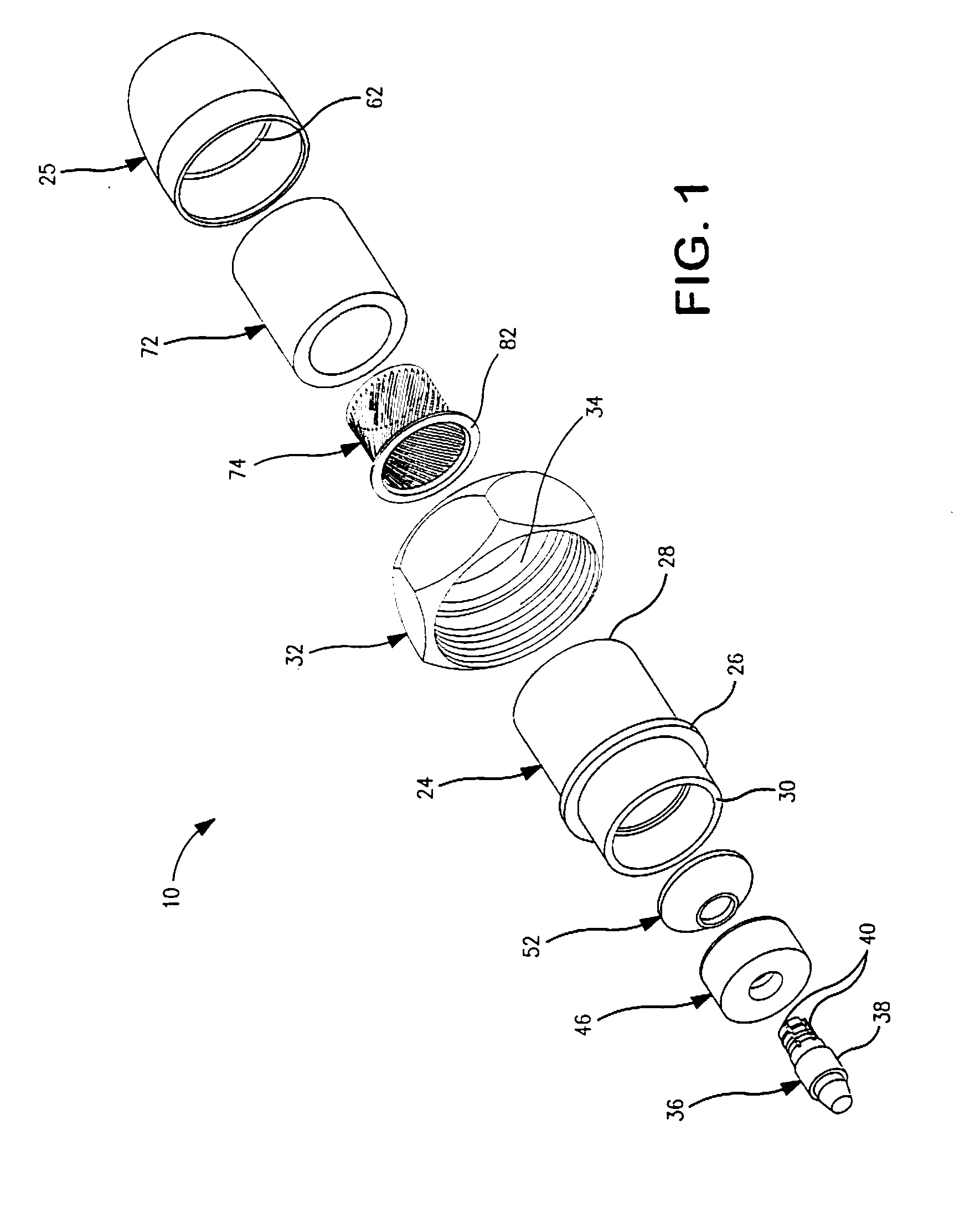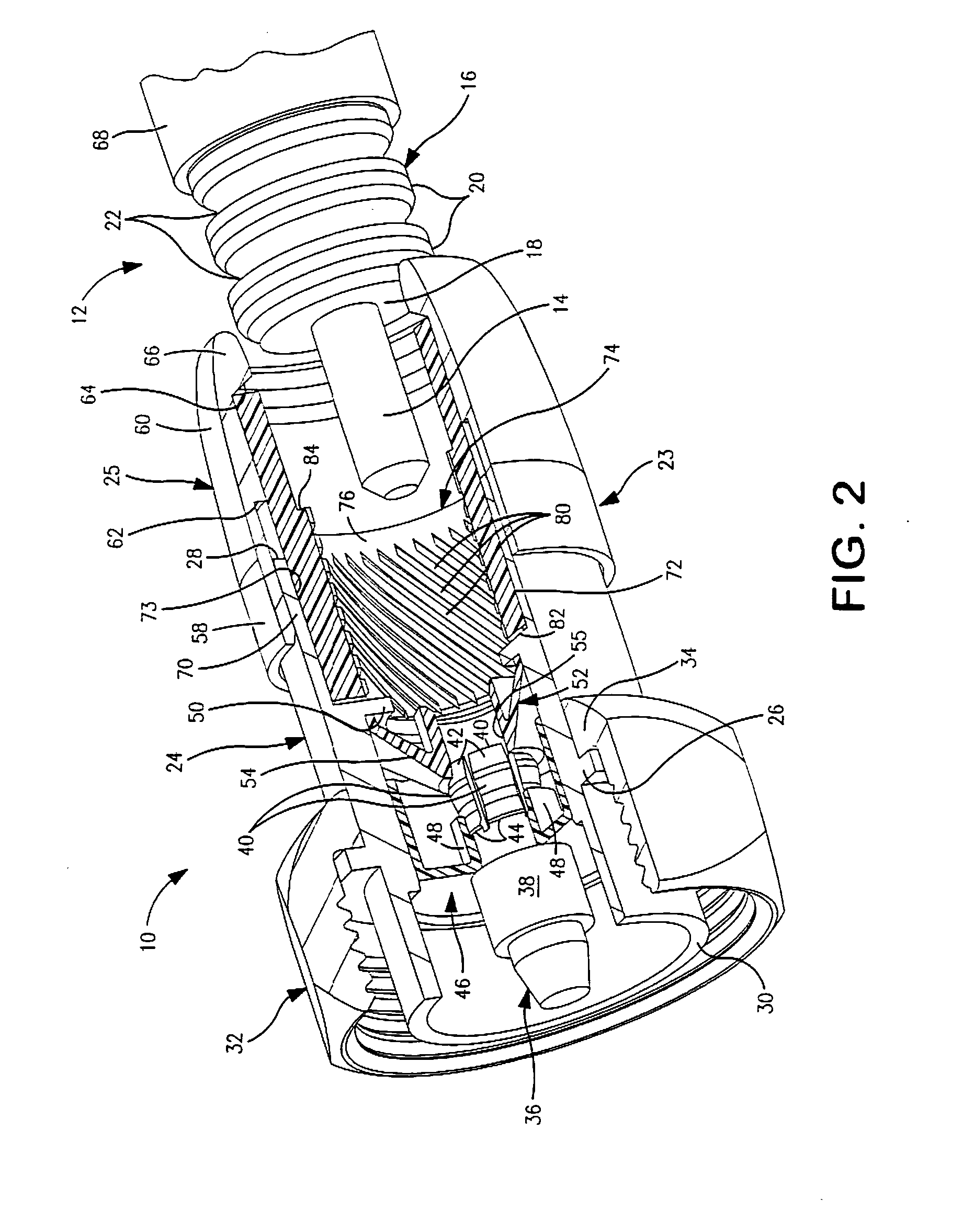Connector for coaxial cable and method
- Summary
- Abstract
- Description
- Claims
- Application Information
AI Technical Summary
Benefits of technology
Problems solved by technology
Method used
Image
Examples
second embodiment
[0051 connector 114 shown in FIG. 9 forms electrical connections with corrugated coaxial cable 116. The connector 114 is similar to connector 10. The cable may be identical to cable 12 or, alternatively, may have spiral wound outer corrugations.
[0052]Connector 114 has a two-part tubular metal body 119 formed from tubular body members 120 and 121. Member 120 has an outwardly extending flange 122 located between the port end of the member and radially inwardly extending flange 124 at the cable end of the member. Bushing 126 is seated in the interior of the member and holds collar 128 and ring 130 in place in the body with the ring abutting flange 124. Collar 128 and ring 130 are similar to previously described collar 46 and ring 52. The collar and ring hold contact pin 132 in body 120. Pin 132 is identical to pin 36. Member 121 is mounted on the exterior surface of member 120 between flanges 122 and 124. Member 121 is tubular and includes a cylindrical inner surface 138 having a frict...
third embodiment
[0056 connector 214 shown in FIGS. 10-13 forms electrical connections with smooth coaxial cable 216.
[0057]Connector 214 is similar to connector 114 and includes a two-part tubular metal body 218 identical to body 119. A thin wall cylindrical conductive member 220 is mounted within unstressed elastomer tube or member 222. Conductive member 220 is identical to the previously described conductive member 86, but conductive members 74 or 88 could be used. Elastomer tube 222 is identical to elastomer tube 150. A tubular conductive elastomer member such as member 105 could be used instead of a separate conductive member and elastomer tube.
[0058]Contact pin 224 includes a collar 226 adjacent contact fingers 228. Collar 226 has a radially enlarged end 230 immediately adjacent the fingers 228. Bushing 232 is seated in the interior of the connector and holds alignment collar 234 and ring 236 in place with flange 238. Ring 236 is like ring 48. Alignment collar 234 has a tubular body with a redu...
PUM
 Login to View More
Login to View More Abstract
Description
Claims
Application Information
 Login to View More
Login to View More - R&D
- Intellectual Property
- Life Sciences
- Materials
- Tech Scout
- Unparalleled Data Quality
- Higher Quality Content
- 60% Fewer Hallucinations
Browse by: Latest US Patents, China's latest patents, Technical Efficacy Thesaurus, Application Domain, Technology Topic, Popular Technical Reports.
© 2025 PatSnap. All rights reserved.Legal|Privacy policy|Modern Slavery Act Transparency Statement|Sitemap|About US| Contact US: help@patsnap.com



